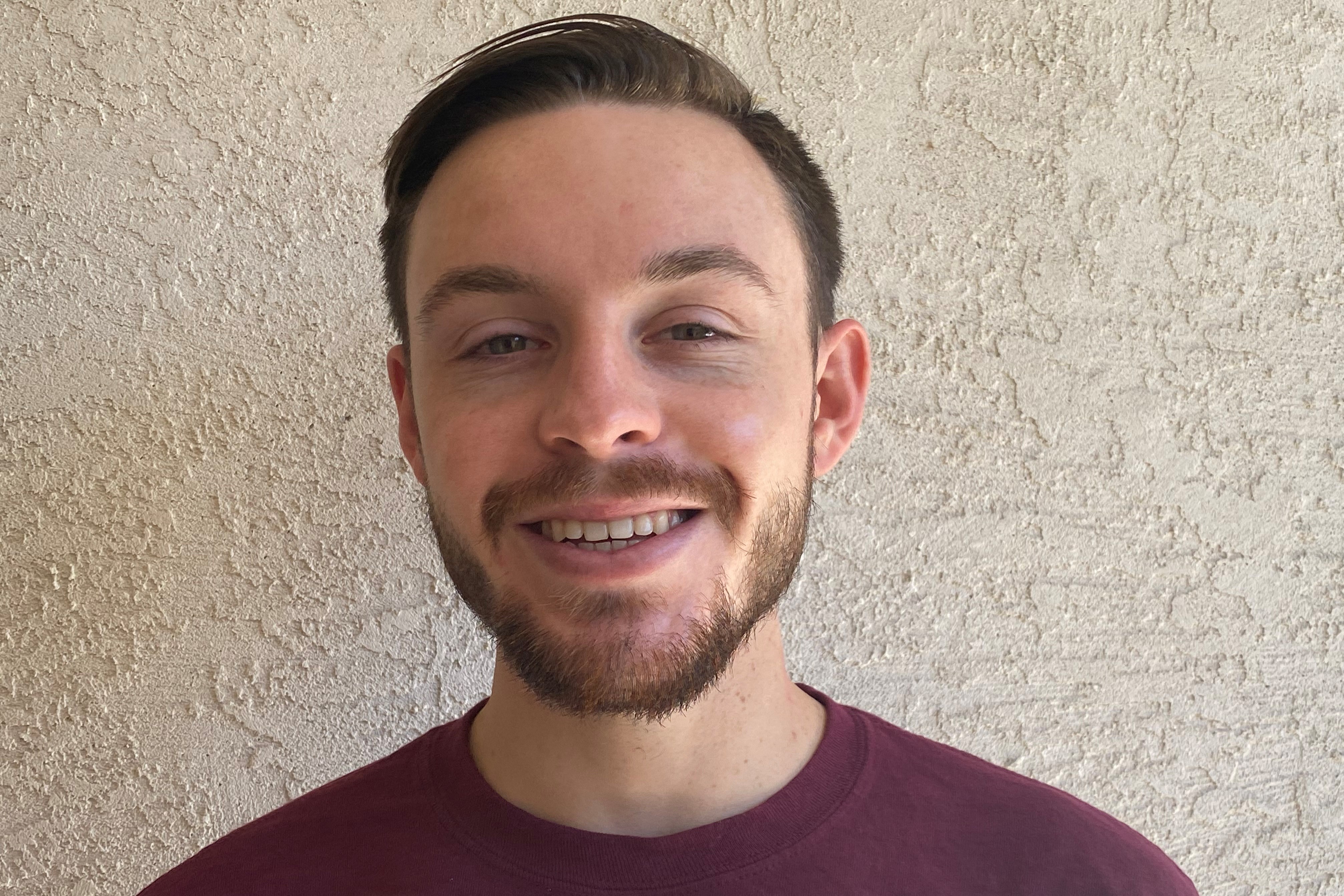
Student profile: Hard work researching body-worn cameras’ effectiveness showed assistant how much he could accomplish
Three months before getting his bachelor’s degree, Quin Patterson had no desire to go to graduate school.
After studying at the School of Criminology and Criminal Justice (CCJ), part of the Watts College of Public Service and Community Solutions, Patterson was looking forward to completing school and possibly pursuing a career in law enforcement.
Then he ran into Michael White, a CCJ professor who is also associate director of ASU’s Center for Violence Prevention and Community Safety (CVPCS). White, who had also been Patterson’s Barrett, the Honors College, thesis director, had other ideas about Patterson’s future.
“I ran into Mike White, and we talked it over. There was funding available (to pursue graduate school),” he said. Now Patterson is finishing work on his master of science degree in criminology and criminal justice and is winding up a research assistantship with White at CVPCS, where he currently works in two areas.
In one area, Patterson serves as a trained technical adviser to several police departments, consulting on their implementation of body-worn cameras. His involvement includes all aspects of rolling out a body-worn camera program, from creating policy and answering questions to connecting police with resources, such as other law enforcement agencies.
In the second area, Patterson works with the Tempe Police Department in a “de-escalation project.” De-escalation, a relatively new focus in law enforcement, focuses on using as little legal force as necessary to neutralize a threat or to maintain public safety. Officers developing these practices learn how to “talk a situation down, so that you might not use any force at all in some situations,” he said.
“The focus is that you’re dealing with a citizen in crisis to get them into a more tranquil state, or seeing a situation prevented from boiling over into a worse situation,” Patterson said.
Research toward creating a de-escalation policy began with Patterson and three other researchers spending around 100 hours individually riding along with officers in patrol vehicles between December 2018 and April 2019, observing, gathering information and taking notes on 150 unique data points per interaction officers had with citizens.
“I’m also using this data for my thesis, examining how citizens’ behavior changes or not in the presence of a body camera,” Patterson said. “In 95 percent of interactions, citizens were not aware there was a camera on the scene.”
Today, Patterson said he still has an interest in law enforcement, perhaps at the federal level. But, he said he might want to head first to the private sector to apply the knowledge he’s gained in his studies and his CVPCS research assignments.
“I learned how well body cameras work and don’t work, depending on the circumstances. Michael Brown’s killing (by police in 2014 in Ferguson, Mo.) was a moment when people really started saying body cameras were necessary,” he said.
“I learned that this sounds good, but I also felt that perhaps the public ought to not go all in on something that has not been 100 percent tested. (Use of body-worn cameras is) still in its infancy in U.S., as the first police departments in the nation got cameras in 2012. My thesis says most studies typically use post-interaction metrics – but since we were riding with officers, we saw the immediate effect the cameras had – and no other studies looking at the civilizing effect of body cameras have done that.”
One possible limitation on viewing body camera video of an interaction is that these cameras are often worn on the chest. If an officer snaps his or her head to look to the left or right, the camera doesn’t turn with it.
He brought up an analogy he’d heard about the resulting video, which compared it to watching a baseball game. Watching body-worn camera video of an interaction is “like watching baseball through a straw,” he added.
Eric Johnson, a CCJ faculty member who coordinates the CCJ internship program, is one of Patterson’s former instructors and a fan of his work.
“Quin is the type of student who makes a professor’s job both enjoyable and easy. As academics, we are always in pursuit of knowledge and Quin was the type of student I would find myself learning from while reading his work,” Johnson said. “He has a natural gift, academically, to go along with great poise and maturity for someone his age and I am excited to see the things he accomplishes in life.”
Patterson said he will always value the chance to work as hard as he did under White’s supervision, which came because White saw what he was capable of accomplishing.
“Your professors might see potential in you more than you see in yourself,” he said.
Mark J. Scarp is media relations officer for the Watts College of Public Service and Community Solutions.